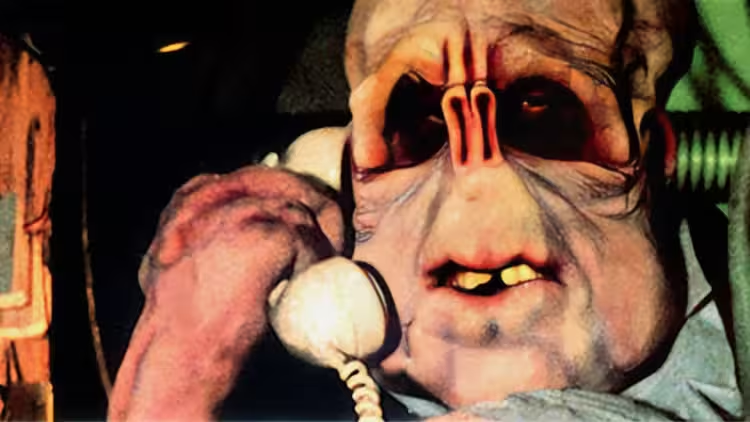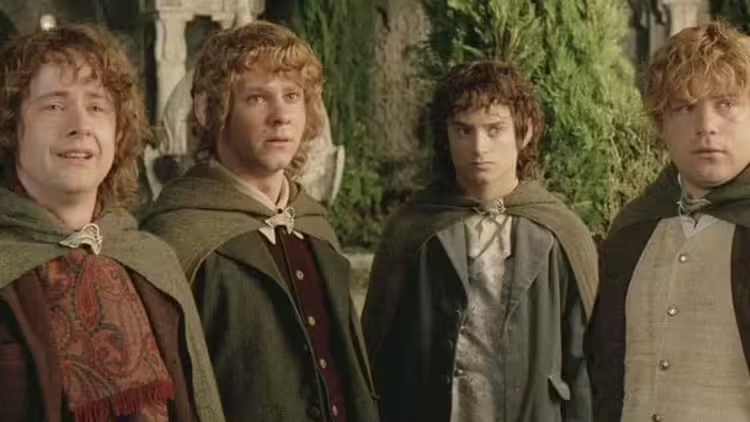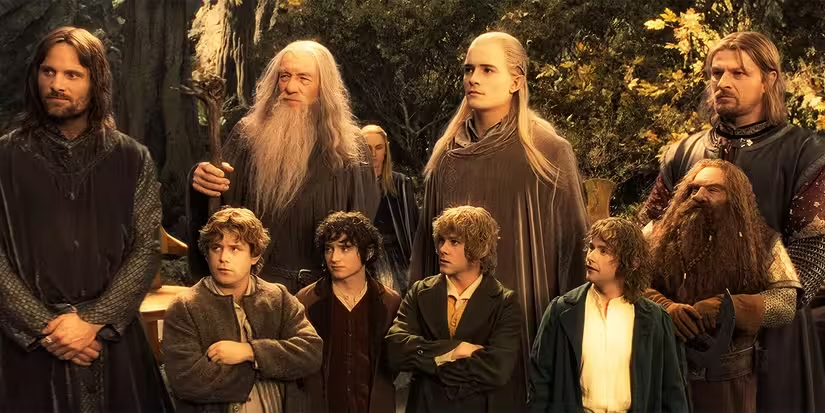8 Minutes
Introduction: A Filmmaker Between Two Worlds
Peter Jackson is a household name in global cinema: the mastermind behind the Oscar-winning Lord of the Rings trilogy, a respected documentarian, and the audacious creator of some of the most memorable horror-comedies ever made. Yet throughout his career the director has largely lived in two camps — sweeping, mythic fantasy and gonzo black-comedy horror. That contrast is precisely why a deliberate fantasy-horror mashup from Jackson would feel inevitable, thrilling, and overdue for modern audiences hungry for bold genre experiments.
Jackson's Early Horror Roots: From Bad Taste to Dead Alive
Before Middle-earth, Jackson honed his cinematic voice in the low-budget splatter scene of New Zealand. Bad Taste, Meet the Feebles, and Braindead (released in North America as Dead Alive) announced a filmmaker who could meld outrageous gore, handcrafted practical effects, and dark, absurdist humor. These movies—full of inventive makeup, puppetry, and DIY special effects—laid the foundation for a sensibility that is both affectionate to genre traditions like The Evil Dead and Gremlins and utterly idiosyncratic.

Plot and tone of the classics
Bad Taste is an alien-invasion sendup that pits a ragtag group of humans against grotesque extraterrestrials. Meet the Feebles turns the camera on a corrupt puppet troupe with vicious social satire. Dead Alive ramps the scale of body horror and dark comedy to a fever pitch: a Sumatran rat-monkey bite sparks a zombie outbreak, culminating in one of the most memorably over-the-top finale sequences in cult cinema history—featuring, yes, a lawn mower used as an improvised weapon amid torrents of blood.
From Splatter to Sophistication: Heavenly Creatures and The Lord of the Rings
Jackson's work shifted in tone and scale with Heavenly Creatures, a chilling drama based on a real murder case that showcased his ability to blend psychological intensity with lyrical visuals. That transformation reached full bloom when Jackson brought J.R.R. Tolkien's Middle-earth to life. The Lord of the Rings films demonstrate Jackson's gift for epic storytelling, commanding landscape photography, large-scale battle choreography, and deft integration of quieter, human moments into grand mythic canvases.
What Jackson learned from Tolkien
Jackson proved he can translate sprawling source material into accessible cinematic form while preserving the source's emotional core. He balanced spectacle with interiority, and employed camera movement and production design to create immersive environments—skills that would translate perfectly to a hybrid fantasy-horror film.

The Frighteners: The Missing Link
Sandwiched between his splatter films and Tolkien epics is The Frighteners (1996), an underrated genre-joining experiment. Starring Michael J. Fox as a haunted con artist, the movie fuses supernatural scares with comic beats and macabre visual invention. The Frighteners offers tantalizing signposts of what a fantasy-horror could be: sweeping, eerie visuals; comedic, sympathetic protagonists; and a villainous presence that pairs mythic dread with visceral horror.
Key scenes that hint at a hybrid
Moments such as the Grim Reaper's flowing cloak and Jackson's signature camera sweeps read like prototypes for the Nazgûl or other mythic antagonists, while the film's willingness to sprinkle in effective gore shows he understands the appetite of modern horror audiences.
Imagining a Lord of the Rings-Style Horror Film: Plot Summary
Imagine a story set on the margins of an epic realm: a rural enclave of peaceful folk—akin to Hobbits or villagers—whose bucolic existence is shattered when a corrupted creature is unleashed. This creature could be a monstrous, otherworldly beast (a 'rat-monkey' on mythic steroids), a cursed relic that spreads a transforming plague, or an ancient forest spirit twisted by war. The infection spreads slowly at first: animals behave oddly, neighbors vanish, then loved ones return changed. Our protagonists would be comic and brave misfits—followers in the tradition of Peregrin and Meriadoc, or a ragtag group reminiscent of Shaun of the Dead—tasked with navigating a landscape that blends pastoral wonder with escalating body horror.
Act structure and themes
Act one establishes the idyllic community and its colorful characters. Act two introduces the supernatural infection and a mounting sense of dread, combining set-piece scares with intimate, human stakes. Act three detonates into a grand, messy climax where the characters must choose between saving their way of life or ending the threat at a catastrophic cost. Themes could revolve around contagion as metaphor—social rot, the cost of complacency, or the tension between mythic destiny and ordinary life—while maintaining a darkly comic undertow.

Cast and Crew: Who Would Fit the Bill?
Jackson's frequent collaborators—actors like Billy Boyd and Dominic Monaghan—already embody the kind of roguish warmth and comedic timing a hybrid needs. Michael J. Fox's vibe from The Frighteners suggests the kind of lead who could blend charm with pathos, though modern casting might favor younger, versatile stars who can sell both the comedy and horror. Behind the camera, longtime collaborators like composer Howard Shore, Weta Workshop, and production designers who understand both epic scale and tactile practical effects would be essential. A team combining VFX brilliance with hands-on makeup and prosthetics would preserve the physicality that made Jackson's early horror so beloved.
Production Details: Practical Effects, Locations, and Budget
To make a fantasy-horror sing cinematically, production would need to embrace New Zealand's varied landscapes—lush meadows, gnarled forests, and brooding highlands—as character elements. Budget-wise, the project could flex between mid-range and blockbuster depending on practical vs. digital effects balance. Jackson's signature approach would favor practical gore and creature design (think animatronics and prosthetics from the splatter years), enriched by modern CGI for large-scale sequences. Collaboration with Weta would ensure convincing creatures and immersive set pieces while keeping the visceral credibility that horror fans demand.
Critical Reception: How Might Audiences and Critics React?
Critics who lauded Jackson's precision in fantasy and his affection for offbeat horror would likely appreciate the ambition of a fantasy-horror hybrid. Some could find tonal balance challenging—juggling epic stakes with gross-out humor risks alienating purists from each camp—but Jackson's track record suggests he can thread that needle. Horror fans would probably embrace the return to practical effects and audacious kills, while fantasy enthusiasts would welcome a new, darker corner of a mythic world. In short, a well-executed Jackson fantasy-horror could be a critical darling with cult appeal and mainstream box office potential.
Personal Take: Why This Film Matters Now
Jackson has been relatively quiet as a director in recent years, and the cultural appetite for genre hybrids is strong—audiences now celebrate films that take risks and defy easy categorization. The success of visceral, darkly comic horror franchises shows there is room for blood, laughs, and heart. Merging his two signature modes—epic fantasy and black comedy horror—would not only be an artistic homecoming for Jackson but also an opportunity to redefine contemporary genre filmmaking: to show that spectacle and guts, wonder and gross-out, can live in harmony on screen.
Conclusion: A Missing Chapter in Jackson's Filmography
Peter Jackson has already left indelible marks on both fantasy and horror. What remains is a formal union of those talents: a film that uses the scale and myth-building of Lord of the Rings while embracing the bodily, comedic excess of Dead Alive. For fans of fantasy, horror, and adventurous cinema, such a project promises a singular experience—a film that feels like a Return of the King to Jackson's own creative roots, but darker, zanier, and gloriously unpredictable.
Source: collider



Leave a Comment